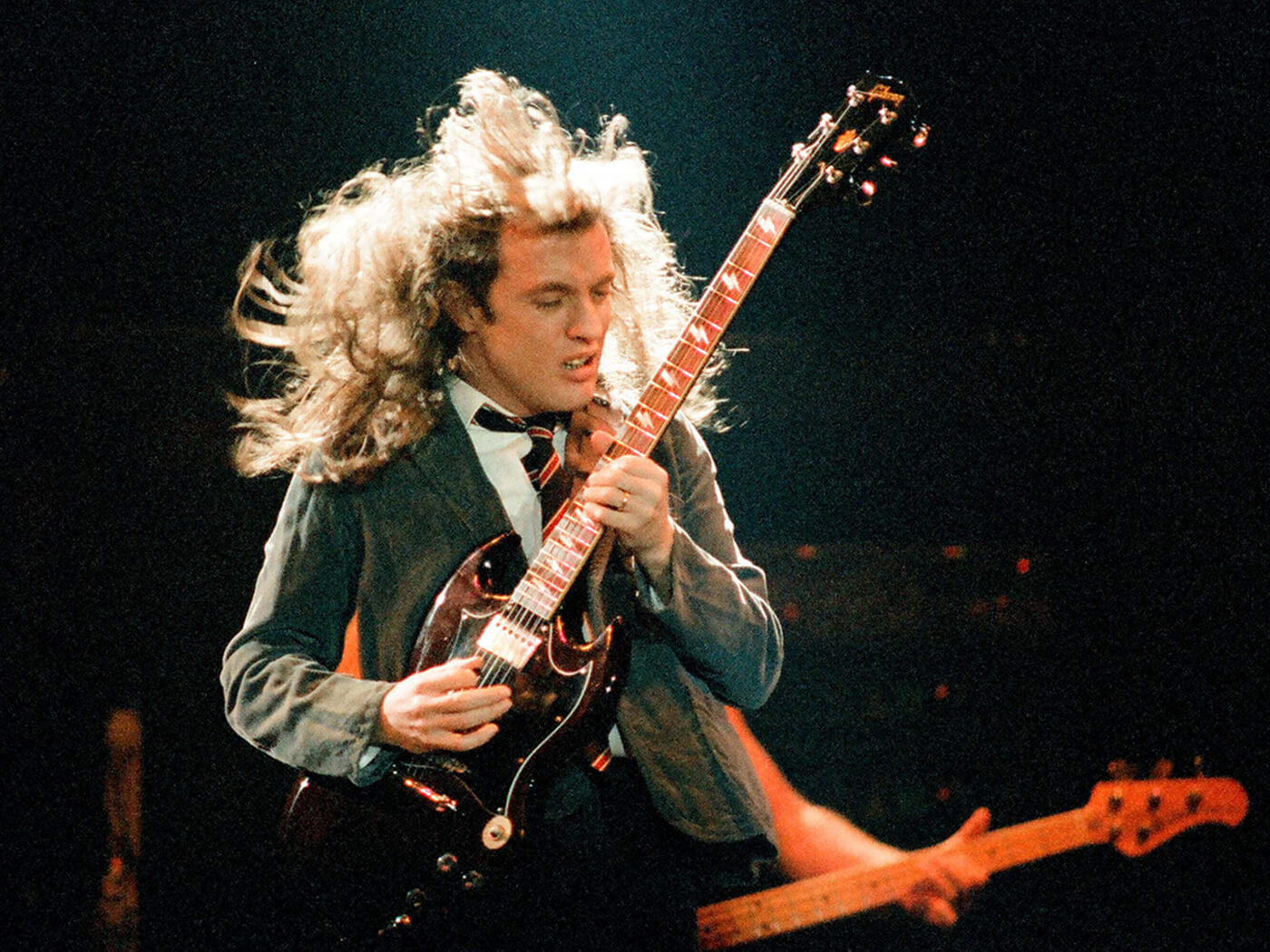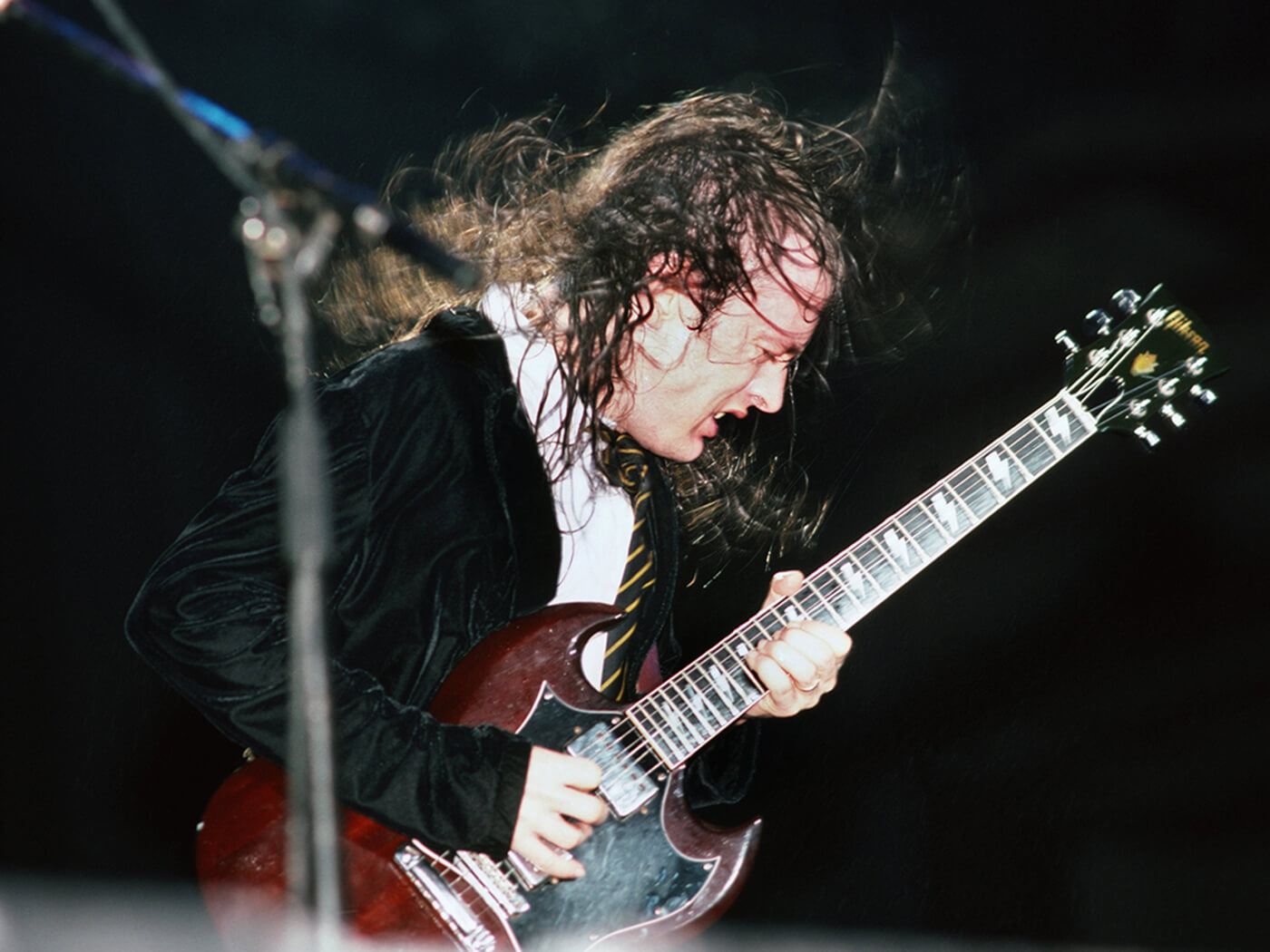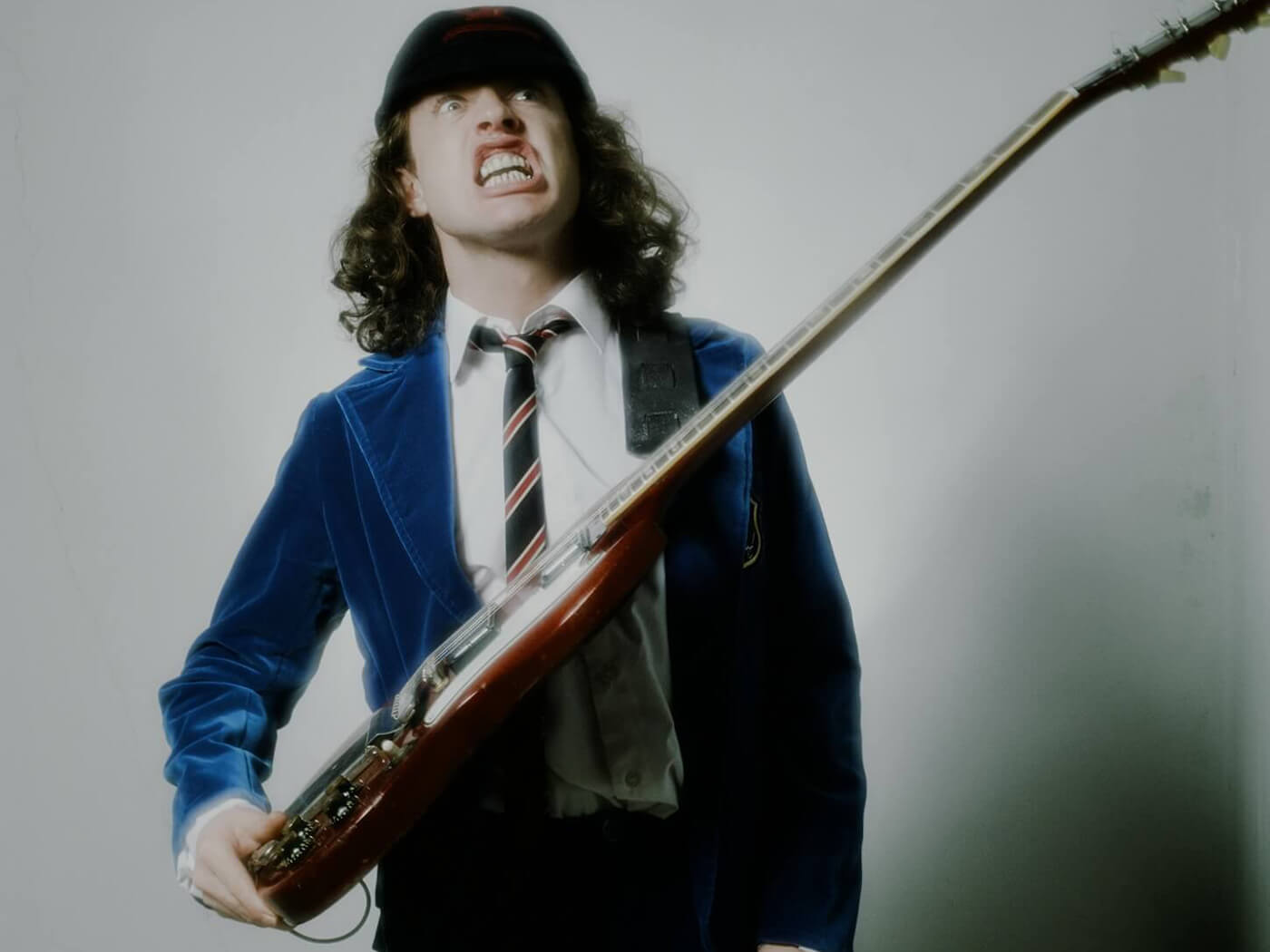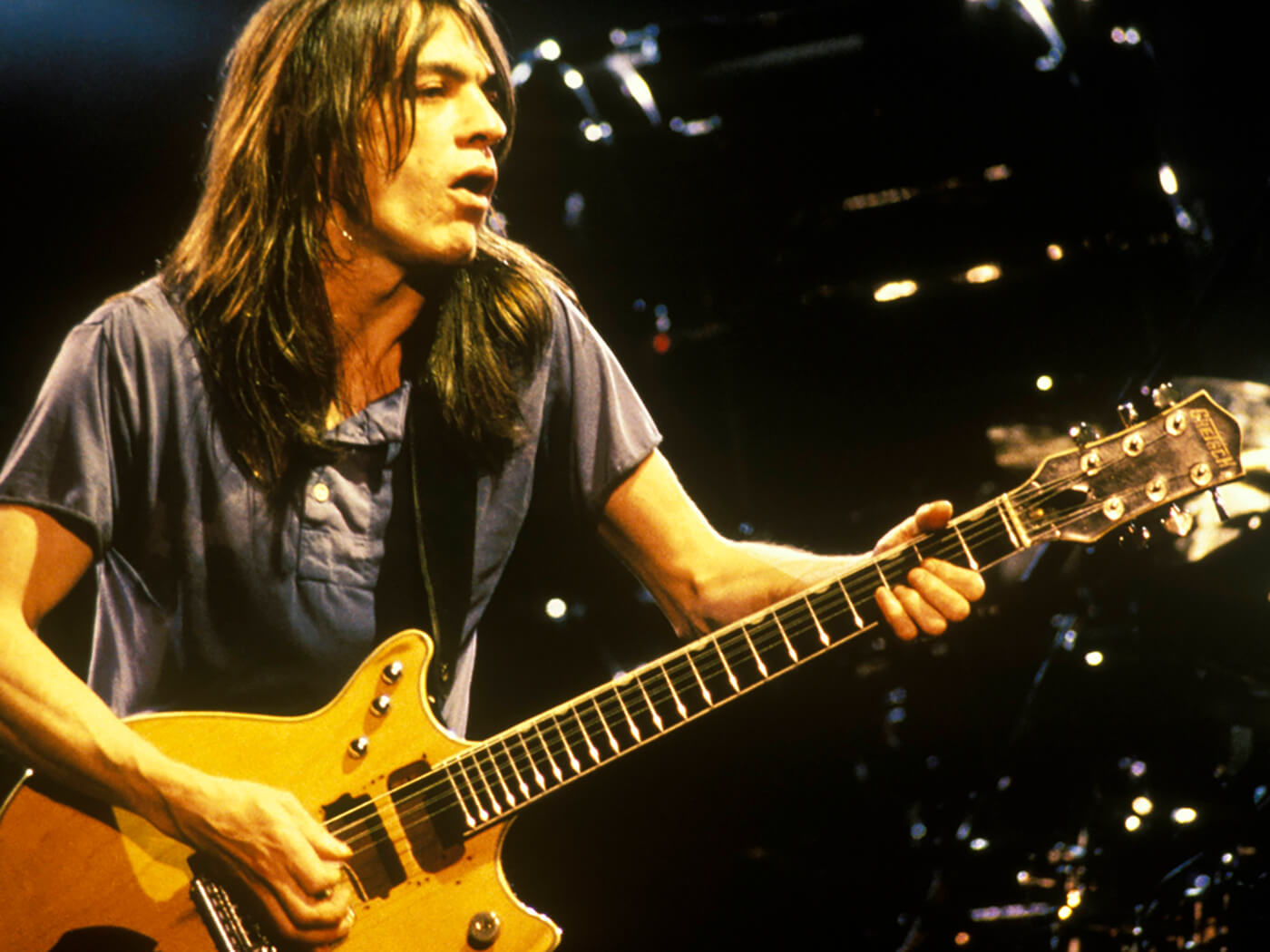The Gear Used By Angus Young and Malcolm Young on AC/DC’s Back In Black
It’s one of the most important rock albums ever, but there’s plenty of misconceptions about the gear the Youngs used to record it – let’s clear those up for you

AC/DC performing in London, 1980. Image: Michael Putland/Getty Images
AC/DC’s Back In Black is one of the most important and influential guitar albums ever made – but there are also a lot of misconceptions and confusions over how the album was recorded, and the gear used to do it.
We couldn’t stand for that, so we reached out to our contacts within the AC/DC camp to help us bust a few myths and set the record straight – let’s shake a leg and get down to it.

Angus Young’s Guitars
Angus had five guitars with him during the Back In Black tour and had always been known to stick to his favourite SG or two in the studio. One guitar that was used was a 1971 Gibson SG Standard in cherry red, which we know he used for the recording of Highway To Hell and Back In Black, as well as the subsequent tours for those albums. Ken Schaffer actually used a Dremel to rout out the back of this SG, along with two other SGs, and installed the SVDS wireless transmitter into the back of the guitar (more on how important THAT is to his tone below). Taking wood from the already thin SG, made it somewhat fragile, but the cavity on the ’71 was not filled in until fairly recently.
According to Angus’ longtime tech, Trace Foster, his number one guitar on the road will often change from tour to tour but he does have one SG that has been used on every AC/DC record, and Back In Black was no exception.
It was retired from touring use about 10 years ago but remains in the studio and was used on the last record, Power Up. That guitar is a 1967 model, and it was his first “proper” guitar that he bought in Melbourne when he first started out. That guitar went through some changes through the years, which has led to a lot of confusion, most notably because it has Angus’ trademark lightning inlays, which were added by John Diggins of Jaydee Guitars. Some people think this means it’s a ’71, others have called it a ’68 — it’s a ’67. It had a factory flawed neck that was abnormally thin and wide. This was the guitar that was used by Gibson’s Custom Shop to make the hand-singed replica run of 50 guitars [the ones with no serial number]. However, the neck was so thin that when Gibson did the Angus Young Signature SG production run, they changed the neck to something a bit more sturdy.
He had three other SGs on tour as backups – a black 70/71 Gibson SG Custom. Normally SG Customs came with three pickups but this one allegedly only had two. Angus also had a 60s SG Custom, walnut in colour, with three pickups, and a 1961 Gibson SG Standard. There is no proof that these guitars were or were not used in the studio for the recording of Back In Black but Angus would often stick with guitars he was comfortable playing live.

Angus Young’s Amps
For the recording of Back In Black, Angus Young used a 1970s 4-input 100-watt 1959 Super Lead, along with a rather rare Marshall JTM50 (made from 1966 to 1967). The JTM50 was an often-forgotten transitional amp between the JTM45 and the Plexi JMPs. They featured a solid-state rectifier in lieu of a GZ34 tube rectifier. Because the JTM50 was a transitional amp, some came from the factory with tube rectifiers and some with solid-state – Angus used the ones with solid-state, which resulted in a tighter, punchier response than those with a tube rectifier. It used EL34 power tubes and some of the models were known to have a bright cap on Volume I. The JTM50 also featured a bass stack as opposed to a lead stack. Sometimes Angus would use JTM45s that had been modded to JTM50 specs.
Angus and Malcolm both played through Marshall 4×12 Cabs with G12-65 speakers. These speakers were originally produced from 78-82 and these days the band has switched to 25-watt Greenbacks in their Marshall Cabs.
Angus Young’s Effects
Many people say, ‘Angus doesn’t use effects’ and broadly that’s a true statement. However, Angus does have one very specific piece of gear that was, perhaps unintentionally, used as an effect. The Schaffer Vega Diversity System (SVDS was the first wireless unit for guitars, and it has been the secret to Angus’ tone since he first got the unit shortly after they came out in 1975.
Today, wireless units strive for transparency, and we would not consider one to be an effect of any kind, but the SVDS unit contained a preamp, along with some very sophisticated audio processing circuitry involving the packaging and unpackaging of the signal at the transmitter and receiver. The method of unpacking the signal is called companding and it is said to be the basis for the unit’s unique sound although the preamp certainly has something to do with it as well. The original run of SVDS ended in 1980 or 1981, according to Schaffer. Today, SoloDallas makes recreations of the original units and pedals designed to replicate some of the tonal qualities of the originals.

According to Angus, he started using the SVDS in August of 1977 and can first be heard on the recording of Powerage,
“George [Young, Angus and Malcolm’s older brother and first AC/DC producer] had suggested that I use the SVDS in the studio in 1978, then when Mutt Lange came in [producer of Highway to Hell, Back in Black, For Those About to Rock We Salute You], he asked me to use the same stuff that I was using for my stage sound, so we used the SVDS again.”
A Premier Guitar Rig Rundown with AC/DC in 2016 confirmed that Angus still uses the replicas for their live shows. Malcom Young did NOT use an SVDS in the studio or when playing live.

Malcolm Young’s Rig
Malcom’s setup was consistently straightforward. For pretty much every recording, Malcolm is said to have used his trusty 1963 Gretsch Jet Firebird which he nicknamed “The Beast” through his 1971 Marshall Super Bass. As Malcolm explained to Guitar World before his passing: “I think the only time I didn’t [use The Beast to record] was when we recorded High Voltage. My guitar had been broken, and we had to get the song down that night, so I just grabbed whatever was lying around the studio. I believe it was a Gibson L-5. To this day I still hear that track and go, ‘Ugh.’ [laughs] But other than that it’s the Gretsch on everything.”
